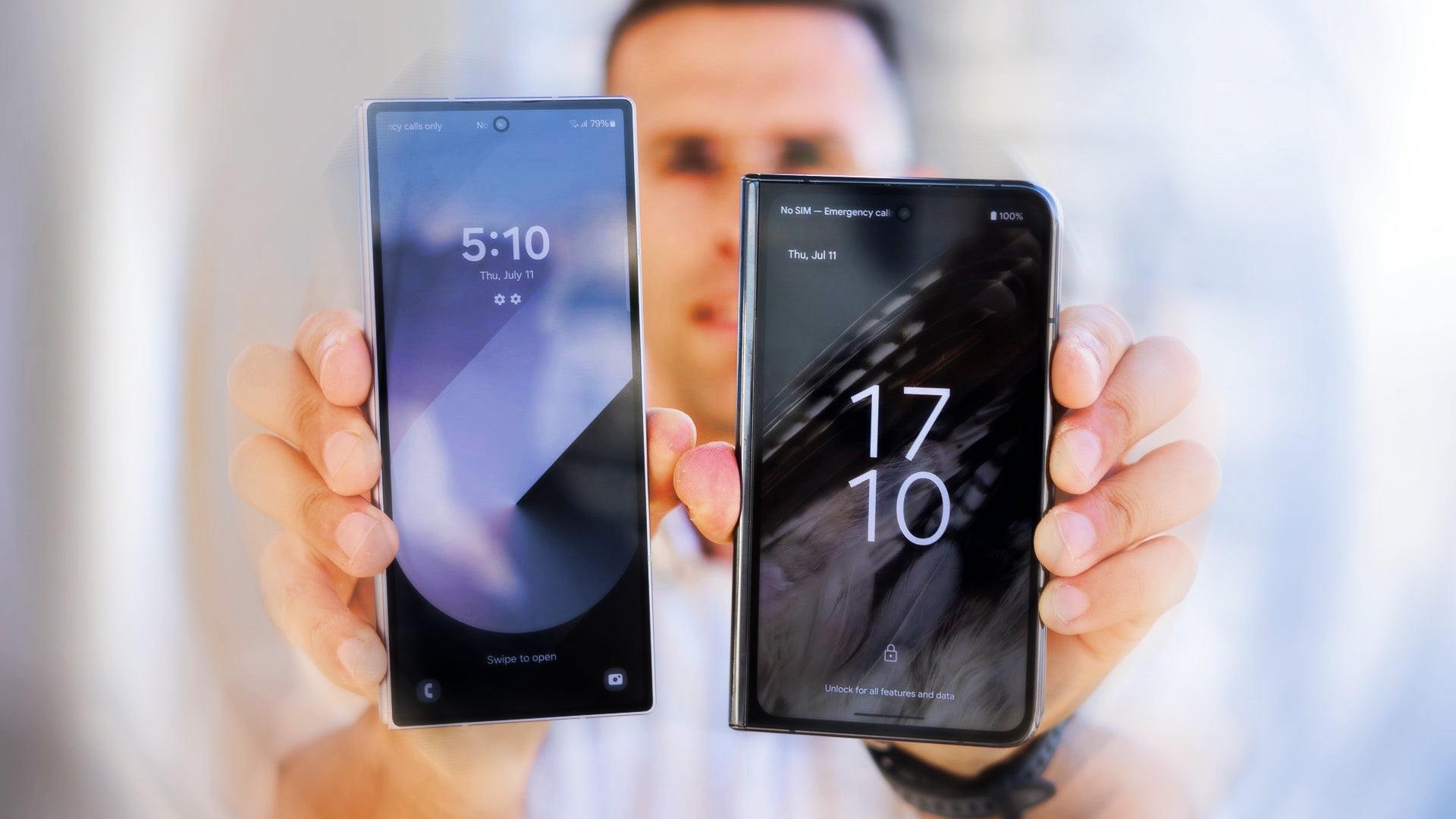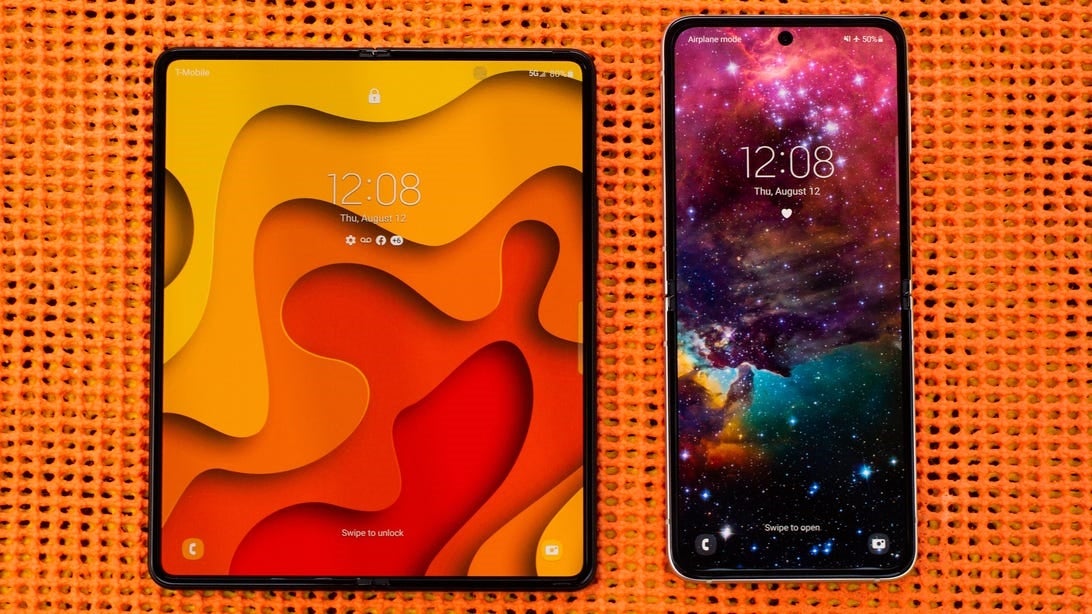Why do we need glass backs on foldables? They are already more fragile and more expensive than a “normal phone”

Glass on the front is enough. Thanks.
Let’s start with what I find to be one of the most blatant mistakes when making a foldable – the glass back.
I bet we can all agree that this was/is already a questionable decision on slab phones (to say the least), but for some reason, it’s even worse on folding phones, which are already delicate and expensive.
When I buy a foldable phone for $2,000, the last thing I want is a back that makes it feel more fragile than it already is. On top of that, glass is significantly heavier than something like plastic, which makes the decision to use glass on the back of the Fold 6 and Pixel 9 Pro Fold even more bizarre and impractical. Are we trying to make foldables lighter or not, Samsung/Google?
Come on now…
When it comes to foldables, lighter trumps thinner


If I had to pick, I’d make my Pixel 9 Pro Fold lighter instead of thinner.
And while we’re at it, let’s exhaust the weight topic…
Sure, I get the obsession with making foldables thinner – that’s especially important for a phone that’s two phones glued together. But my hot take is that lighter weight is even more important when it comes to a foldable.
Folding phones are already heavy because of the hinge and extra display and stuff… So when you use one for extended periods of time (especially as a tablet), that weight becomes noticeable. For example, when you’re in bed.
I suppose you could say “the key is finding the right balance” but I’d take a lighter foldable like the Galaxy Z Fold 6 over the thinner Pixel 9 Pro Fold. It also feels way more comfortable in your pocket.
Folding phones need Silicon-carbon batteries more than regular phones


You’d think with all the advancements in battery technology, we’d have slimmer, higher-capacity batteries in folding phones before we get them in slab phones – but not really. The silicon-carbon (Si/C) batteries, which pack significantly higher energy density in a slimmer form-factor are the perfect battery candidate for a folding phone that desperately needs to get slimmer, lighter, and last longer on a single charge.
Cutting-edge design deserves cutting-edge hardware, and if the likes of Samsung, Google, and OnePlus can’t deliver this in the shape of a killer camera system (which is understandable), they can at least give us a battery that lasts all day.
A $1,800 folding phone wasn’t “affordable” in 2019, and it isn’t affordable now


For the record, there are some exceptions. The Galaxy Fold often goes on sale, which makes it much more accessible, and brands like Tecno will get you a “budget-friendly foldable” for as low as $1,200.
At this rate, foldables will stay a luxury product instead of becoming mainstream, and that’s not good news for the industry – or the people who want a foldable.
In a nutshell, it’s time to get serious about bringing folding phone prices down – even if it’s by $100-200. If Samsung and Google really think folding phones are the future, they need to make them accessible to more people.
The aspect ratio problem is real – folding phones should be a rectangle


The right shape is a rectangle. Period.
As I wrote in my recent rant on the same topic, I get the idea – you want to create a device that works as both a phone and a tablet but the main point of a foldable is being able to make the most out of the large display, and I’m not sure the square aspect ratio makes that possible.
There’s a reason tablets don’t use square displays. They’re widescreen because that’s how we consume content. Moreover, videos, games, even web browsing – it all looks better on a wider screen. And have you tried typing on the inner screen of the Pixel 9 Pro Fold? No, no, no, no… That ain’t it.
The Galaxy Z Fold 6’s rectangular aspect ratio brings the best of both worlds, and I strongly believe that’s how all foldables should be made.
Let’s get serious about the stylus, or just get rid of it


Foldables are supposed to be productivity and creativity powerhouses, and if that’s true, some power users and creatives could certainly do with a pen that fits inside their foldable. Somehow.
Samsung offers the S Pen as an accessory for the Galaxy Z Fold, but there’s no place to store it. You’re expected to carry it around separately, which makes the experience far less seamless, which makes you less likely to use it.
Now, with the rise of generative AI tools, having a stylus to use with your large foldable makes even more sense. Whether it’s taking notes, drawing, or using the stylus to edit photos, design graphics, or play around with Samsung’s bizarrely fun Sketch to Image gen AI, a stylus makes the experience better and more precise.
Hey, Samsung, Google, OnePlus (and the rest)… Let’s start taking foldables seriously, and pick up the (innovation) pace


But companies like Samsung, Google, and OnePlus need to start focusing on making them more practical to use, and avoid making blatant mistakes like putting a glass back on an already heavy and fragile phone.
I don’t need a glass back that makes my foldable heavier and more fragile; I don’t need a battery that doesn’t last a whole day, or square screens that make my large display awkward to use. I want a more durable, lightweight, affordable foldable with practical features.
I guess the good news is that the foldable revolution is far from over, but… can we pick up the pace, please?

